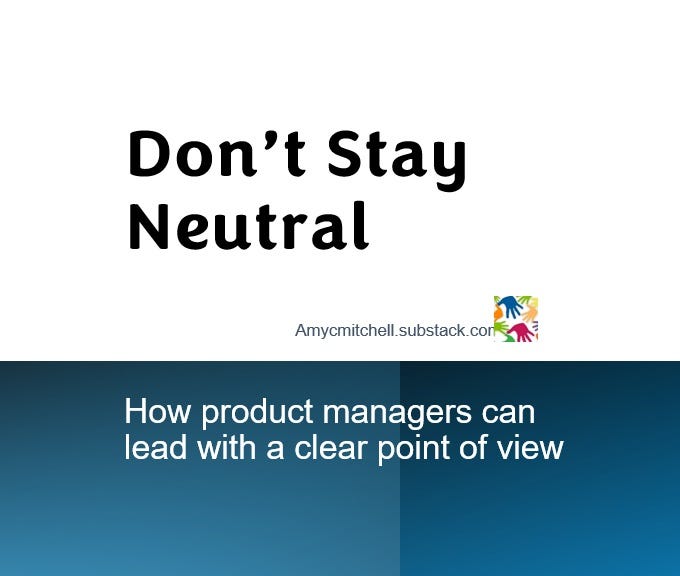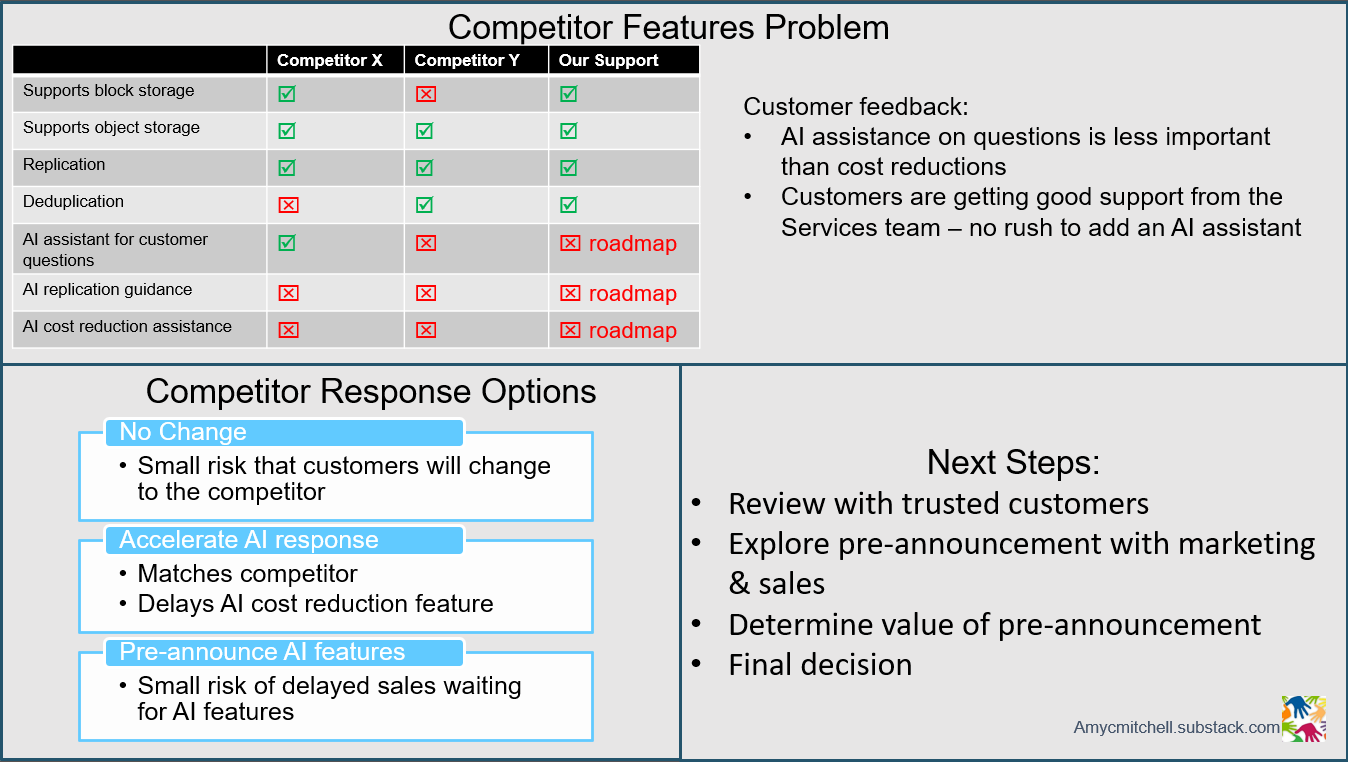Leading With a Point of View
As a product manager, you often face tough decisions. The best way to move forward is to set a clear direction and communicate your point of view to the team.
A Point of View (POV) document is a powerful tool for this. It allows you to quickly prototype a solution, gather feedback, and align everyone on your perspective. This isn’t just for senior product managers—it’s a practical framework that can be leveraged to cut through ambiguity and drive meaningful progress.
In some scenarios, staying neutral or waiting for consensus can slow you down. Sometimes you need to take a position and work to a conclusion together. Here are two common situations where a POV can make a critical difference:
Your pricing is too complicated, leading to confusion and sales friction.
Competitors are announcing better features than your product has
In both of these cases, a POV can help rally your team, clarify the next steps, and spark the innovations needed to move your product forward.
Scenario 1: Pricing is Too Complicated - Make It Clear
Your pricing has many variables depending on the type of user, the scale of the customer, and feature tiers. You have prepared a big ordering guide for sales. Still, sales teams struggle to explain pricing to potential customers.
A neutral position will prolong the problem and lead to frustration.
How a POV Can Help:
A POV shows the problem, the options, and the proposed next steps. In this case, it looks like:
Problem
Product managers are needed 50% of the time to quote a price
4 items to price for low-revenue commercial customer
Options considered
Continue with custom pricing
Single tier of pricing for all customers
Three tiers of pricing
Next steps
Segment customers to validate tiers
Evaluate the impact on the forecast
Decide implementation steps
Here is the storyline for handling pricing complexity in 3 slides for your POV:
Scenario 2: Competitor Features are Better - Focus on What Matters
Competitors have announced features that put your product at a disadvantage. There is a lot of pressure to catch up. Feature parity with competitors doesn't align with your product's strategy.
Staying neutral will divert resources from your long-term strategy. Rushing features out that customers don't need won't grow your product.
How a POV Can Help:
A POV shows the problem, the options, and the proposed next steps. In this case, it looks like:
Problem
Competitors are adding AI features
Customer-requested AI features are coming soon
Options considered
No change; continue with the roadmap
Accelerate low-effort AI features
Pre-announce your AI features
Next steps
Review with trusted customers
Explore pre-announcement with marketing & sales
Determine the value of pre-announcement
Final decision
Here is the storyline for handling competitive feature requests in 3 slides for your POV:
The slide templates in this article are here (for Paid Subscribers)
Conclusion - Leverage the Power of a POV to Drive Action
Creating a POV transforms product managers from passive observers into drivers of meaningful action. It becomes the catalyst that leads teams toward results by turning vague challenges into clear opportunities. For many product issues, a well-crafted POV doesn’t just align teams—it sparks new ideas and creative collaboration.
When facing tough challenges like pricing complexity or intense competitive pressure, a strong POV fuels innovative solutions. The simple act of documenting issues and proposing a path forward often generates unexpected support and clarity. As a product manager, don’t wait for the team to find direction—take the lead by shaping a strong POV and setting the course for success.
In product management, neutrality stalls progress—POVs move you and your product forward.
TLDR Product listed recent articles from this newsletter! This biweekly email gives you a consolidated email of recent product management articles.
Last week’s backstory for paid subscribers was about leading your team by following. Ideas for Being a Good Follower in Product Management
Connect to Amy on LinkedIn, Threads, Instagram and X/Twitter








This is a great article!
Thanks for sharing this
Love this, great job Amy! It is essential for PMs to have an opinion... because they're the ones prioritizing what's important and picking the problem(s) to solve!
This reminds me of the mantra "fail fast". I'd also apply a "one way door or two way door" approach to this thinking based on the irreversibility of the approach at hand.